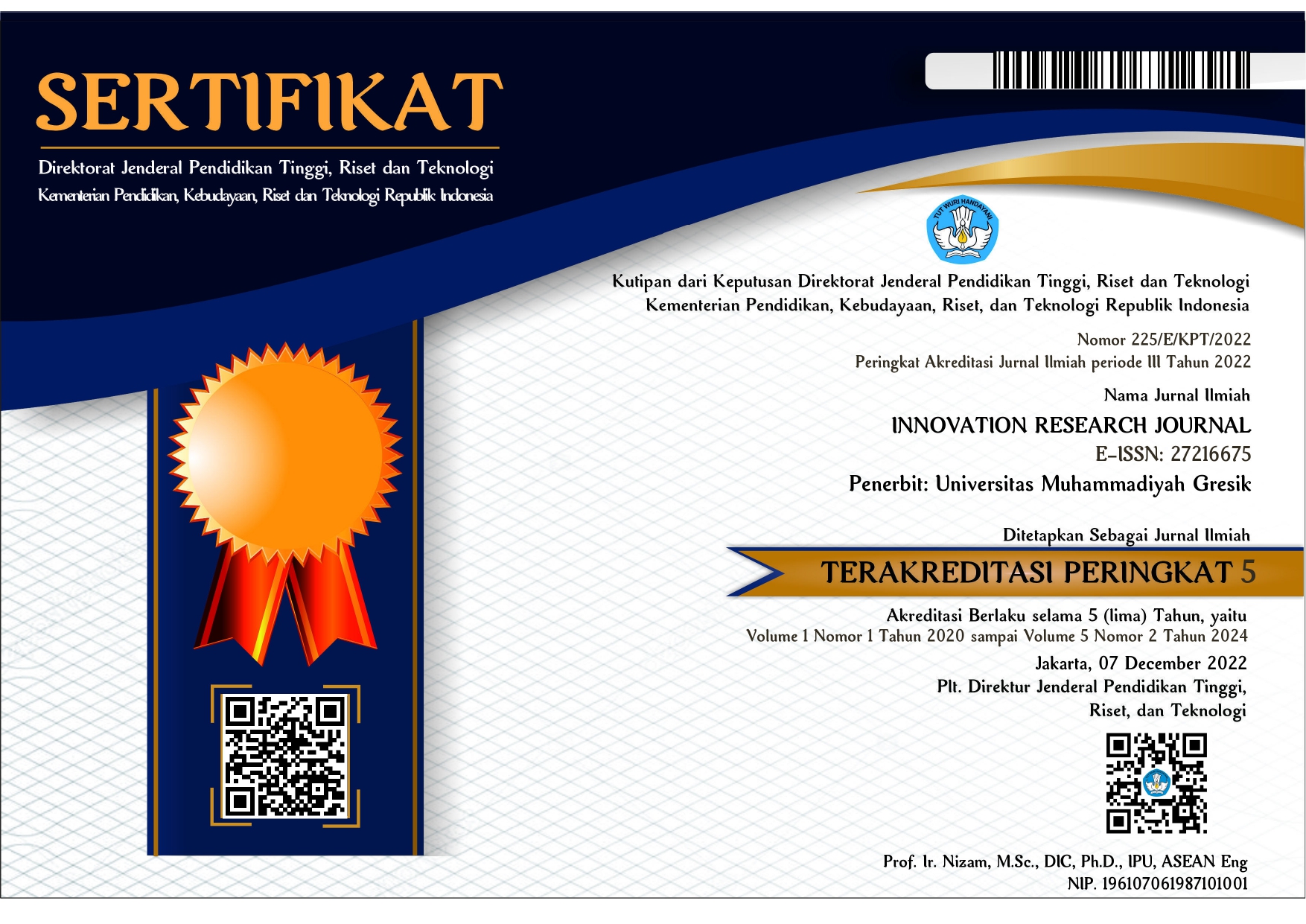Efforts to Prevent Recurrence of Stroke in Stroke Patients
DOI:
https://doi.org/10.30587/innovation.v5i2.8370Keywords:
Efforts to Prevent Recurrent Stroke, Recurrent Stroke IncidenceAbstract
Stroke is a major health problem for modern society today. A person who has had a stroke has a greater tendency to have a recurrence of stroke. This study aims to analyze efforts to prevent the occurrence of recurrent stroke in stroke patients at the Neurological Poly of Muhammdiyah Gresik Hospital. This type of research is correlational analysis, which is looking for a relationship between two variables, with a cross sectional approach between independent and dependent variables. The population in this study is all stroke patients at the Neurological Poly. The sample was taken by purposive sampling technique obtained by 48 respondents. The test results showed that the significance of the overall count results was less than 0.05 which meant that there was a significant relationship between prevention efforts, namely blood pressure control, bloodsugar control, obesity, medication adherence, family support and stress to the occurrence of recurrent strokes. Based on the results of the study, it is hoped that health workers can make efforts to prevent recurrent stroke as an important step in handling stroke patients and provide education about it to patients and their families. The hospital should make standard operational procedures or other forms of policies regarding efforts to prevent recurrent strokes.
Keywords : Efforts to Prevent Recurrent Stroke, Recurrent Stroke Incidence
References
Asyfah, A., Usraleli, U., Magdalena, M., Sakhnan, S., & Melly, M. (2020). The Relationship between Obesity and the Incidence of Hypertension in the Working Area of the Sidomulyo Inpatient Health Center. Scientific Journal of Batanghari University of Jambi, 20(2), 338. https://doi.org/10.33087/jiubj.v20i2.926
Djila, D., Tahu, S. K., & Batubara, S. O. (2017). The Relationship between Family Role and Stroke Patients' Compliance in Participating in Physical Rehabilitation in the Physiotherapy Room of Prof. Dr. WZ Johannes Kupang Hospital. Dr. WZ Johannes Kupang.
Gaol, D. L. (2023). OBESITY AS A RISK FACTOR FOR STROKE (Observational Analytical Study at Gondosuwarno Ungaran Hospital, Semarang Regency). pp. 1–58.
Indrawati, E. S. (2015). Socioeconomic status and intensity of family communication in housewives in Panggung Kidul Semarang, North Semarang. Undip Journal of Psychology, 14(1), 52–57. https://doi.org/10.14710/jpu.14.1.52-57
Oktamia, Lisa, M. (2016). The Relationship between Family Support and Student Stress Levels in Doing Thesis at S1 Nursing, University of Muhammadiyah Ponorogo. University of Muhammadiyah Diponegoro, 139–141.
Oktaviana, F., Istiqomah, N., & Masniyah. (2020). Online Health Promotion "Getting to Know Stroke Disease Better." Proceedings of the National Seminar on Arts Community Service 2020, 2018, 50–55.
Pramana, G. A., Dianingati, R. S., & Saputri, N. E. (2019). Factors Affecting Drug Adherence in Hypertensive Patients of Prolanis Participants at the Pringapus Health Center, Semarang Regency. Indonesian Journal of Pharmacy and Natural Product, 2(1), 52–58. https://doi.org/10.35473/ijpnp.v2i1.196
Puspitasari, P. N. (2020). The relationship between hypertension and stroke incidence. Scientific Journal of Health Sandi Husada, 12(2), 922–926. https://doi.org/10.35816/jiskh.v12i2.435
Raisa, M. (2014). LEFT HEMIPARESIS e.c HEMORRHAGIC STROKE. 2, 70–79.
Safitri, I. M., & Saputro, S. D. (2022). Nursing care for ischemic stroke patients in meeting oxygenation needs. University Of Kusuma Husada Surakarta, 14, 10–17.
Soto-Cámara, R., González-Bernal, J. J., González-Santos, J., Aguilar-Parra, J. M., Trigueros, R., & López-Liria, R. (2020). Age-related risk factors at the first stroke event. Journal of Clinical Medicine, 9(7), 1–12. https://doi.org/10.3390/jcm9072233
Sukma, B. A., Aminah, N., & Koswara, C. L. (2020). The Relationship between Stress Levels and Stroke Prevention Behavior in Hypertensive Clients at the Gununghalu Health Center, West Bandung Regency 2020. Journal of Budi Luhur Health: Journal of Public Health, Nursing, and Midwifery, 13(2), 316–323. https://doi.org/10.62817/jkbl.v13i2.127
Suriya, M. (2017). The Relationship between Motivation and the Implementation of Post-Stroke Patient Care at Dr. M. Djamilpadang Hospital 2016. Lppm Umsb, 11(76), 90–95.
Wardhani, I. O., & Martini, S. (2015). The Relationship between Stroke Patients Characteristics and Family Support with Compliance Rehabilitation. Jurnal Berkala Epidemiologi, 3(1), 24. https://doi.org/10.20473/jbe.v3i12015.24-34
Wicaksana, I., Wati, A., & Muhartomo, H. (2017). Sex differences as a risk factor for the clinical outcome of ischemic stroke patients. Diponegoro Medical Journal, 6(2), 655–66









